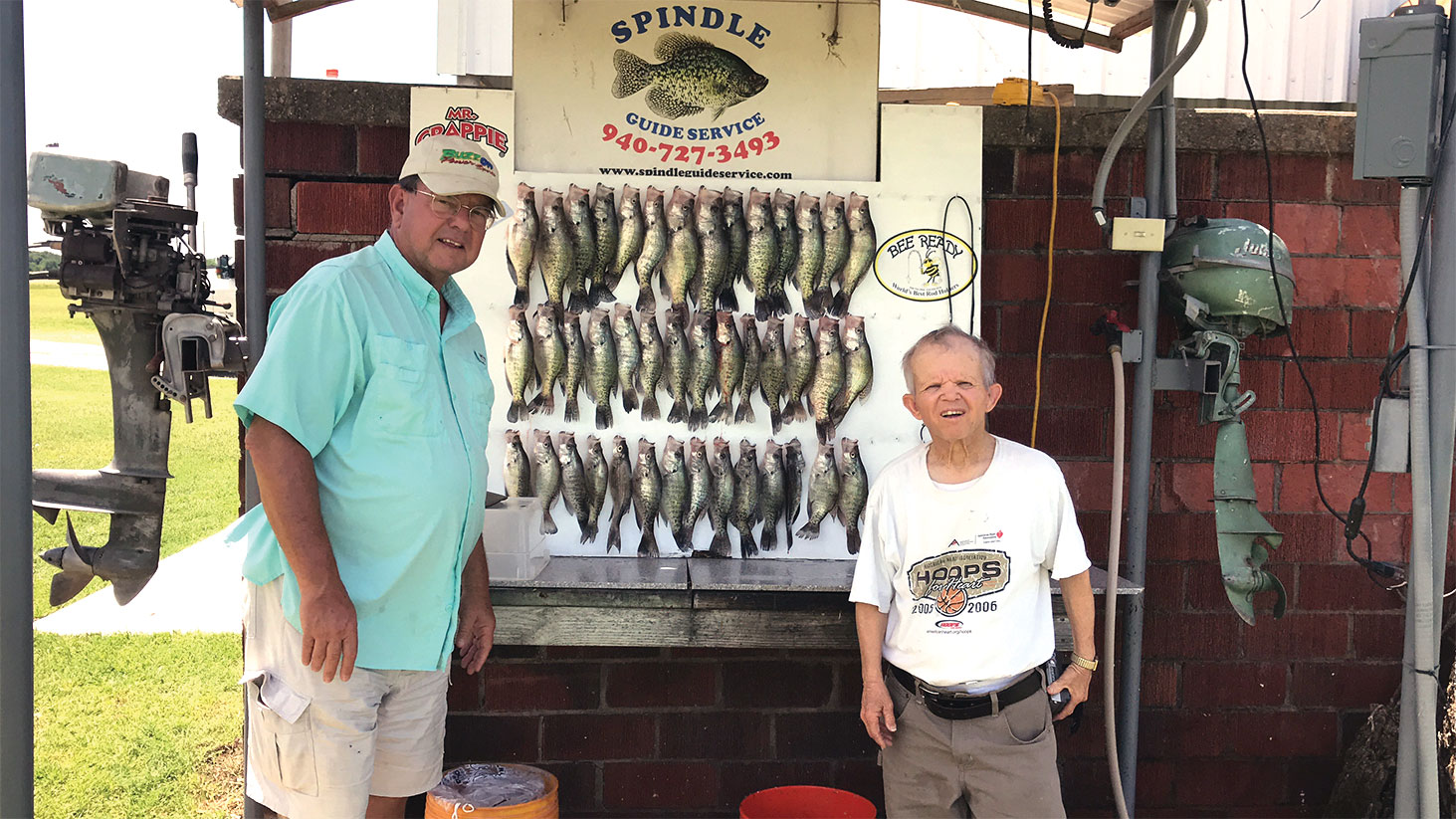
Scott Baker
Among the many species of fish native to the Lone Star State is crappie and Lake Ray Roberts is one of the prime lakes for some really good fishing encompassing over 25,000 acres with a lot of submerged vegetation. So, with a growing empty spot developing in our freezers, we headed out to fish for crappie — or slabs, paper mouths, or sac-au-laits as some anglers call them — where they move into shallow waters to complete their annual spawning cycle.
Ray Roberts has about 2000 acres of standing timber. Some years ago, the Corps of Engineers cleared the main lake area north of the dam, leaving big piles of floating brush and debris and submerged aquatic vegetation at intervals all along the shorelines. These have become hangouts for crappie.
One key consideration for springtime anglers to remember is that when there is one crappie swimming around, there is usually a pretty good crowd not too far behind. After finding that perfect underwater brush pile where the fish were concentrated, we caught our daily limit. Under current Texas law we were able to keep 25 crappie each – that being a combination limit for both black and white crappie; and the fish must be 10 inches or longer in order to keep for eating.
With our fisherman’s luck, we bragged about our limit of big sac-au-lait filets heading for the fish fryer. If you’re interested in getting your own limit of tasty crappie filets over the next few weeks, then head on out to Lake Ray Roberts, because with every passing day here in North Texas, the springtime crappie fishing is simply getting better and better and better.
Interested in dropping a line? Plans are always in the works for fishing destinations to Lake Texoma (striper and bass), Lake Ray Roberts (crappie and bass) and Lake Tawakoni (catfish) among others. The RR Fishing Club meets the second Wednesday of each month at the Wildhorse Grill at 5:30 p.m. For any inquiries, comments or suggestions, contact RobsonFishing@gmail.com or Scott Baker 214-334-7664.
